Unless you are an expert in trees, it might be challenging for you to ascertain if a tree on your property should be removed.
Knowing when to keep maintaining and when to cut down a tree is very important. It could save lives and property. This guide explains the red flags you need to watch out for while assessing your tree’s health. Even if you have to hire a tree expert to assess your tree, it’s totally worth it.
Trees are awesome pieces of nature. However, when they start posing hazards, it’s best to avoid them falling over. This will ensure that we get rid of the pending accidents that can result from the fall.
What we cover
ToggleSigns a tree needs to be removed
Branches overhanging on roofs and power lines
When large branches of a tree are becoming a threat to your building or any structure close to it, it becomes inevitable to remove them. Overhanging branches on roofs or power lines is an imminent danger. Such branches can break away from the tree unexpectedly and cause havoc to buildings, vehicles, humans, and pets.
Overhanging branches on power lines1 is the most dangerous. There is the risk of electrocution as well as power outage when the branches fall off suddenly. Trimming the overgrown branches may return the tree to a good state.
Sudden Branch Drop Syndrome
If the branches fall off independently, it may indicate Sudden Branch Drop Syndrome. This can happen even to completely healthy trees. It is prevalent in oak, beech, elm, eucalyptus, and sycamore trees.
Having a tree expert assess your tree will be the best way to know if the overhanging and falling branches require you to remove the whole tree.
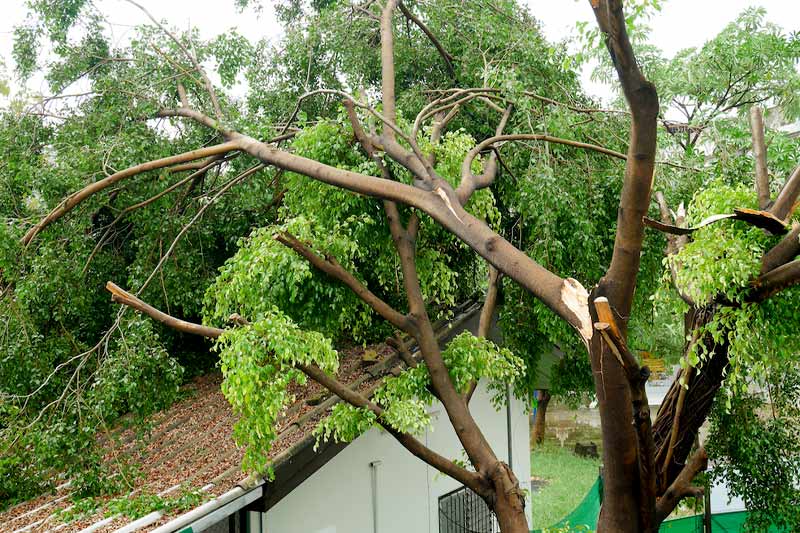
Dying trunk
The state of your tree trunk can tell you a lot about your tree’s overall health. Falling bark, cracked trunk, and hollow trunks are some indicators of a dying tree. The trunk of a tree is crucial in supporting the tree’s health.
A weak trunk can lead to quick and sudden collapse, which is something you certainly don’t want to happen.
An occurrence of mushrooms2 around the tree trunk is an indication of fungus growth that occurs in a dead tree.
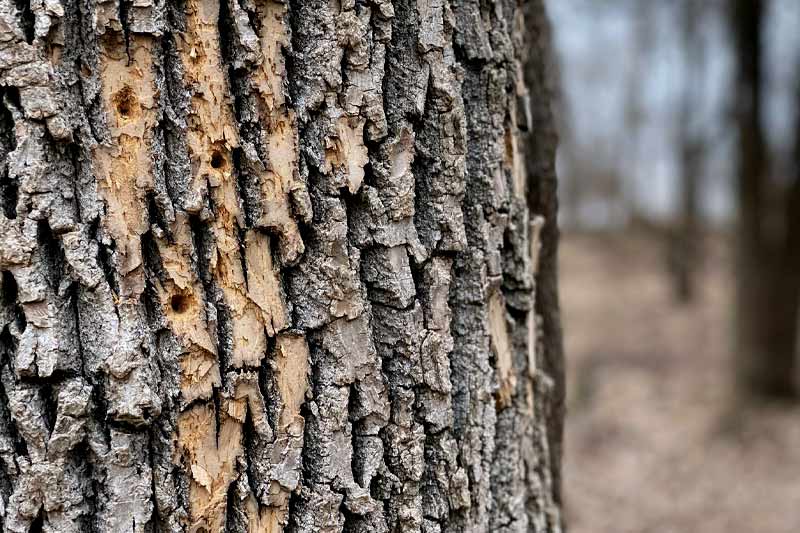
Invasive roots
One of the most threatening dangers to your building is invasive roots. Thick roots that grow horizontally, creeping into the ground in search of moisture could bring down your building. Their major targets are water-rich items like pipes, sewers, and other drainage forms.
If you take note of such pronounced root invasion by any of the trees in your yard, it’s time to say goodbye to the tree.
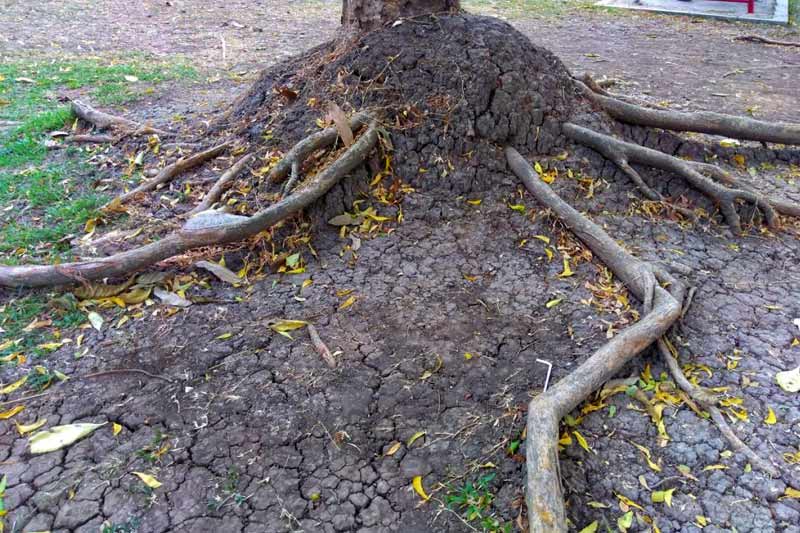
Diseased tree
There are a number of indicators to tell whether your tree is diseased. Discoloration of leaves, weak branches that easily fall off, rotten roots and trunks, and holes in tree trunks are some of the instances.
When a tree is struggling to stay alive, leaves can really say a lot. Unhealthy trees may have fewer leaves than other trees that are nearby. Such trees may also have leaves with different colorations (especially yellow and brown).
Whenever you notice any one or combination of these symptoms in your tree, you should get ready to remove such a tree as soon as possible.
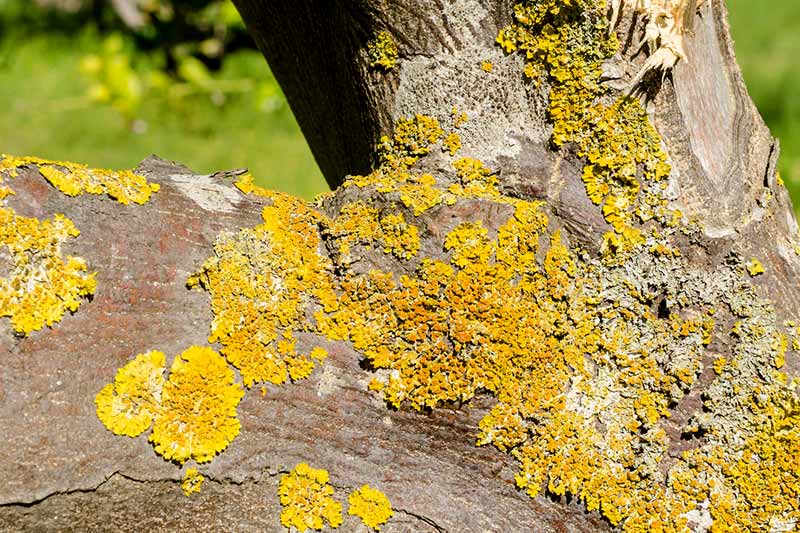
Stress
When your tree starts to send out shoots from the lower parts, it’s an indication that it’s struggling to survive. This is an indication of stress. Usually, the upper branches will die afterward and it will start a new growth with the new shoots.

Storm damage
Trees that experience frequent storm damage may not be able to stand the test of time. If your area has experienced a big storm or a harsh winter, it may be obvious in the tree. Evidence of storm damage may include a cracked trunk, missing limbs, or exposed roots.
Tree experts are best consulted to give recommendations on how to save a tree that has suffered damage from a storm. Sometimes, they also recommend its removal if that is the safest option.
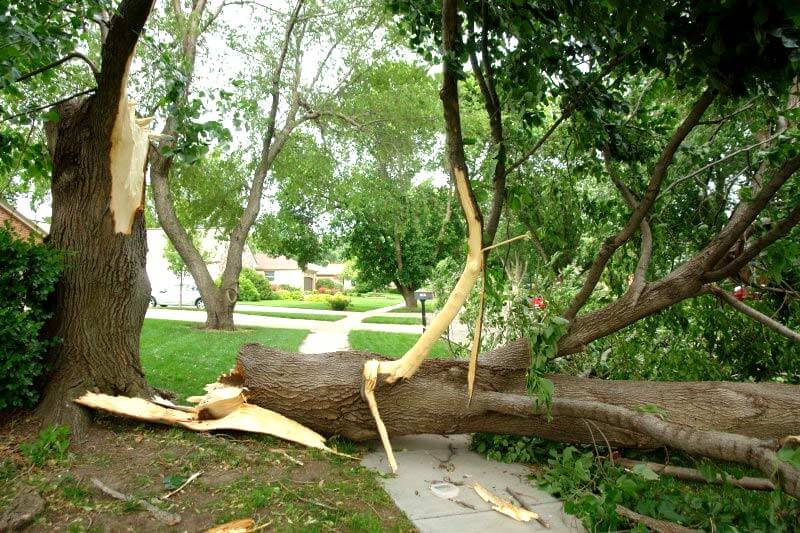
When should you not cut a tree?
The importance of having trees around the home cannot be overemphasized. From the Oxygen it gives, to the Carbon-dioxide it absorbs, and the erosion it prevents, every tree around us in its healthy state is meant to improve the quality of our lives.
It’s best to only remove a tree when it poses an obvious risk to the people, structures, and utility lines around it. If your tree is healthy but only requires maintenance to keep it in good shape, it’s best to leave it to thrive.
Some of the maintenance habits to keep a tree healthy include trimming the overgrown or dead branches, adding fertilizer, and making sure it gets enough water.
Should dead trees be cut down?
There are various reasons why you should cut down a dead tree. These include:
Dying tree
If your tree is dead or clearly dying, it’s a good idea to remove it. A dead tree is not just an eyesore, it’s a hazard, especially in dense urban or suburban neighborhoods.
Dead trees pose a danger to your home/neighbourhood
If you’re conscious of the safety of your home and neighborhood, you shouldn’t assume that dead trees are harmless. Even though the branches or roots can no longer encroach into the building or drainage, there are other things that make dead trees an abode of danger.
Dead trees can be home to pests and snakes
Dead trees can serve as hiding spots for animals such as dangerous snakes, scorpions, and even pests. Having such pests or animals living in your yard will not be a good idea.
Dead trees are weak
Also, the whole parts of a dead tree are weakened. They are already brittle and they can break at any time, causing damage to property and humans around them. Beyond the environmental danger it poses, a dead tree is also an economic danger as it reduces the value of the property.
When is the best time to cut down trees?
The best time of year to cut down a tree would be during winter or early spring when the leaves have all fallen and the branches are free from them.
This means that the surrounding landscape will be protected while the ground is frozen. The frozen ground keeps the vegetation safely in its place while the tree is removed3.
Is it cheaper to cut down trees during winter?
Yes, you’re likely to get your tree cut down at a low cost during this time because most people wouldn’t think of removing their trees at this time. The tree companies usually have fewer trees to remove and will likely charge less.
However, if the tree is infested and it has become a threat to the safety of its surrounding lives and property, you don’t need to wait for any time of the year.
You should contact the tree companies to remove the tree as soon as possible.
Dead tree removal services near me
Looking to remove your dead tree?
You can get 3 Estimates from the most affordable tree services by using this FREE service.
GoTreeQuotes.com is a FREE service that quickly matches you with 3 tree surgeons voted #1 by previous users in your area.
- Scroll up to the top of the page and enter your ZIP Code in the blue form at the top of the page.
- Give us a few details about your tree removal job plus some contact information.
- Your tree details are forwarded on to the closest three tree services all voted best priced who will also price your tree job.
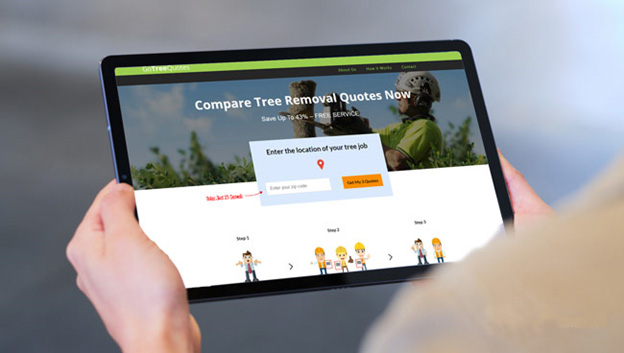
- Lucius Hawthorne, (2023) The Dangers of Tree Branches Touching Power Lines. <https://housetoolkit.com/is-it-ok-for-tree-branches-to-touch-power-lines/> Accessed: 15-03-2024.
- Brockley Tree, (2023) Monitor Mushroom Growth Near Your Trees. <https://brockleytree.com/mushroom-growth-near-your-trees-next-season/> Accessed: 15-03-2024.
- University Of Minnesota Extension, (2022) Pruning trees and shrubs. <https://extension.umn.edu/planting-and-growing-guides/pruning-trees-and-shrubs> Accessed: 15-03-2024.



